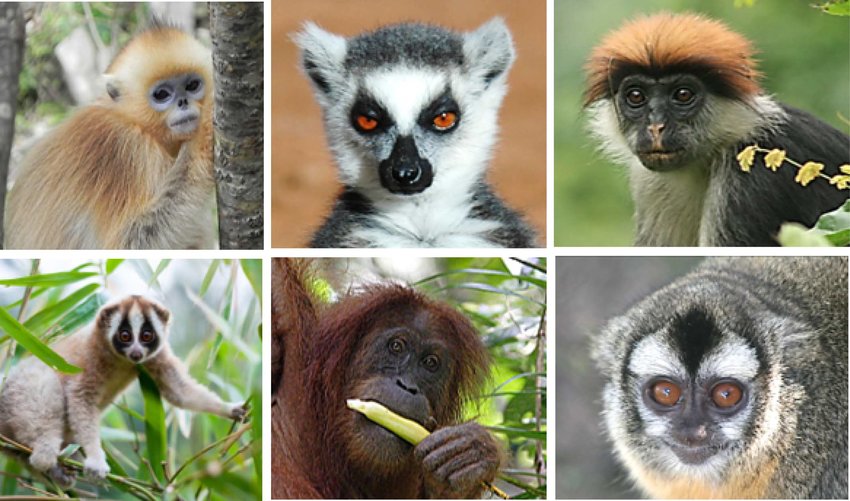
Primates are a fascinating and diverse order of mammals that includes lemurs, monkeys, apes, and humans. They are known for their intelligence, social behavior, and ability to use tools. Primates can be found in a variety of habitats around the world, from the rainforests of South America to the deserts of Africa.
There are over 260 different species of primates, which can be broadly divided into two suborders: strepsirrhines and haplorhines.
- Strepsirrhines (wet-nosed primates) have a moist nose and a more primitive visual system. They are also known as lemurs, lorises, and bushbabies.
- Haplorhines (dry-nosed primates) have a dry nose and more advanced vision. They include tarsiers, monkeys, and apes.
Here is a closer look at some of the different types of primates:
- Lemurs: Lemurs are the most primitive primates and are found only on the island of Madagascar. They come in a variety of shapes and sizes, from the tiny mouse lemur to the indri, which is the largest lemur species. Lemurs are known for their large eyes, long tails, and vocalizations.
- Monkeys: Monkeys are the most diverse group of primates and can be found in Africa, Asia, and South America. There are over 260 different species of monkeys, which vary greatly in size, behavior, and social structure. Some well-known monkeys include chimpanzees, gorillas, orangutans, and baboons.
- Apes: Apes are the largest primates and are known for their intelligence and social behavior. There are only six species of apes: humans, chimpanzees, bonobos, gorillas, orangutans, and gibbons. Apes share many similarities with humans, including the ability to use tools and language.
Primates play an important role in the environment. They help to disperse seeds, pollinate plants, and control insect populations. Primates are also a valuable source of information for scientists who study human evolution and behavior.
Unfortunately, many primate species are threatened with extinction due to habitat loss, hunting, and the illegal pet trade. Conservation efforts are underway to protect primates and their habitats.
Here are some things you can do to help primates:
- Support organizations that are working to protect primates and their habitats.
- Educate yourself and others about the threats that primates face.
- Choose products that are made from sustainable materials to help reduce deforestation.
- Visit a primate sanctuary or zoo to learn more about these amazing creatures.
By working together, we can help to ensure that primates survive for generations to come.
Enjoy this entertaining and educational video from WIRED and the Dian Fossey Gorilla Fund.






